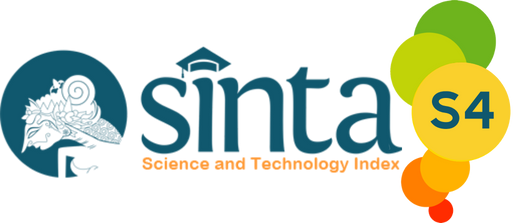Assessing Fluency and Coherence in the Speaking Skill Of Street Verdor in Tourism Area
DOI:
https://doi.org/10.29303/goescienceed.v5i4.755Keywords:
Fluency, Coherence, Street Vendor. EILTS RubricAbstract
Using the IELTS rubric as a method for evaluation, the study aims to determine assessing the present fluency and coherence levels among the chosen street vendors based on the criteria specified in the IELTS rubric. Through a qualitative research design, the data collected from a sample population consisting of 9 street vendors from Kuta Mandalika. In order to collect the data, the researcher through interview test which consist of two part, dialogue and monologue each part lasted up to 3-5 minutes. The result showed that there were 3 part category to determine which are intermediate, limited and not competent. The intermediate result show 2 people in range 5.5-6.5 Band. Limited shows 2 people in range 4-5 Band and the rest of them are not competent. In conclusions all the participants were within the context of the "limited" assessment criteria. In computing the mean (average) of the numbers 2, 5, 6, 5, 3, 6, 4, 4, 3, the initial step involves summing these values to obtain a total of 38. Following this, the sum is divided by the total number of values, which is 9. This calculation yields a mean of approximately 4.22. Therefore, the mean of the dataset is approximately 4.22.
References
Adams, B. L. (2020). How English-speaking teachers can create a welcoming environment that allows students to maintain and utilize their language through translanguaging: A qualitative case study. Journal of Culture and Values in Education, 3(2), 196–211.
Bonvillain, N. (2019). Language, culture, and communication: The meaning of messages. Rowman & Littlefield.
Crisianita, S., & Mandasari, B. (2022). THE USE OF SMALL-GROUP DISCUSSION TO IMRPOVE STUDENTS’SPEAKING SKILL. Journal of English Language Teaching and Learning, 3(1), 61–66.
Elbes, E. K., & Oktaviani, L. (2022). Character building in English for daily conversation class materials for English education freshmen students. Journal of English Language Teaching and Learning, 3(1), 36–45.
Forman, M. L., Stosich, E. L., & Bocala, C. (2021). The internal coherence framework: Creating the conditions for continuous improvement in schools. Harvard Education Press.
Klebanov, B. B., Diermeier, D., & Beigman, E. (2019). Lexical cohesion analysis of political speech. Political Analysis, 16(4), 447–463.
Kortmann, B. (2020). Syntactic variation in English: A global perspective. The Handbook of English Linguistics, 299–322.
Lata, L., Walters, P., & Roitman, S. (2019). A marriage of convenience: Street vendors’ everyday accommodation of power in Dhaka, Bangladesh. Cities, 84, 143–150.
Logan, K. J. (2020). Fluency disorders: Stuttering, cluttering, and related fluency problems. Plural Publishing.
Malasan, P. L. (2019). The untold flavour of street food: Social infrastructure as a means of everyday politics for street vendors in Bandung, Indonesia. Asia Pacific Viewpoint, 60(1), 51–64.
Masyithah, N. (2020). Students’ Strategies in Improving Speaking Fluency. UIN AR-RANIRY.
Pulla, V., & Carter, E. (2018). Employing interpretivism in social work research. International Journal of Social Work and Human Services Practice, 6(1), 9–14.
Rao, P. S. (2019). The importance of speaking skills in English classrooms. Alford Council of International English & Literature Journal (ACIELJ), 2(2), 6–18.
Toba, R., Noor, W. N., & Sanu, L. O. (2019). The Current Issues of Indonesian EFL Students’ Writing Skills: Ability, Problem, and Reason in Writing Comparison and Contrast Essay. Dinamika Ilmu, 19(1), 57–73.
Xie, F., & Derakhshan, A. (2021). A conceptual review of positive teacher interpersonal communication behaviors in the instructional context. Frontiers in Psychology, 12, 708490.
Zakirovich, G. B. (2023). Accuracy and fluency in language teaching. International Journal of Social Science & Interdisciplinary Research Issn: 2277-3630 Impact Factor: 7.429, 12(05), 19–25.
Downloads
Published
How to Cite
Issue
Section
License
Copyright (c) 2024 Jurnal Pendidikan, Sains, Geologi dan Geofisika (GeoScienceed)

This work is licensed under a Creative Commons Attribution-ShareAlike 4.0 International License.







